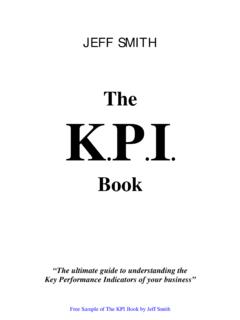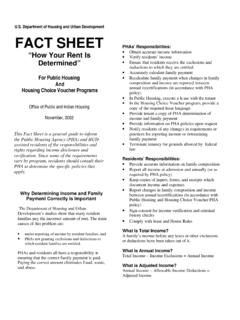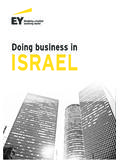Transcription of Guidelines regarding rollover as business start-ups
1 DEPARTMENTOFTHE TREASURY. INTERNAL REVENUE SERVICE. WASHINGTON, 20224. TAX EXEMPT AND. GOVERNMENT ENTITIES OCT1 2008. DIVISION. Recently, personnel in our examination and determination letter functions have identified a retirement plan design that appears to operate primarily to transact in employer stock, resulting in the avoidance of taxes otherwise applicable to distributions from tax-deferred accumulation accounts. Although we do not believe that the form of all of these transactions may be challenged as non-compliant per se, issues such as those described within this memorandum should be developed on a case-by-case basis. Those cases currently in process or held in suspense should be worked within the context of these Guidelines . Please cascade this memorandum to your managers and technical employee staff as appropriate. EXECUTIVESUMMARY. A version of a qualified plan is being marketed as a means for prospective business owners to access accumulated tax-deferred retirement funds, without paying applicable distribution taxes, in order to cover new business start-up costs.
2 For purposes of this memorandum, these arrangements are known as Rollovers as business Startups, or ROBS. While ROBS would otherwise serve legitimate tax and business planning needs, they are questionable in that they may serve solely to enable one individual's exchange of tax-deferred assets for currently available funds, by using a qualified plan and its investment in employer stock as a medium. This may avoid distribution taxes otherwise assessable on this exchange. Although a variety of business activity has been examined, an attribute common to this design is the assignment of newly created enterprise stock into a qualified plan as consideration for these transferred funds, the valuation of which may be Questionable. BACKGROUND. Employee Plans first identified ROBS provisions giving rise to these transactions through our regular compliance processes, including determination letter submissions and later project examination activity. They are proprietary defined contribution plans, generally established in the form of profit sharing plans coupled with a cash or deferred arrangement (CODA).
3 Several different promoters have crafted variations on this design, but the elements of each are sufficiently similar that they can be addressed generally. Although ROBS arrangements may operate as profit sharing plans, their primary purpose appears to be to provide funding for the establishment of a business or franchise. They are designed to allow a newly created business entity to retrieve available tax-exempt accumulation funds from its principal in exchange for its capital stock, simultaneously avoiding all otherwise imposable distribution income and excise taxes that would ordinarily apply to the transaction. The typical ROBS customer is an individual seeking to start up a personal business , and having accumulated tax-deferred investment funds, usually in the form of a defined contribution account created under a prior employer's From our review of open cases, franchises are often the business form of choice, and this design is marketed as a funding method on various internet sites.
4 After client engagement, the practitioner-promoter apparently advises the individual to create a C-corporation. A number of corporate shares may be created, but they are not issued. After incorporation is complete, the practitioner installs a qualified profit sharing plan, sponsored by the shell corporate entity. The plan document used is generally a "pre-approved" specimen, but is usually supplemented with a single amendment. This amendment generally exists as either a stand-alone amendment or a tack-on addition to a qualified plan adoption agreement, and consists of a one paragraph provision to permit the plan to invest plan assets attributable to rollover accounts up to 100% in employer securities. The individual then executes either a rollover or direct trustee-to-trustee transfer of the proceeds from the available tax-deferred investment account into this newly created plan. At this point, the prior account is usually liquidated; all proceeds are parked in a rollover account held in trust under the shell corporation's plan.
5 The amendment provision is then acted on immediately, and the individual directs the corporation to issue and then exchange all of its capital stock into its qualified plan in exchange for the proceeds held in the rollover account. The corporate shares, now held as plan assets, are valued and booked equal to the value of available account proceeds. I At the time the ROBS transaction is executed,some of theseamounts may remain as deferred separatedaccounts held under a prior plan trust, and some appearto have been rolled over into a "conduit IRA", which was a common utility for individual retirement arrangementsprior to the expandedportability provisions enactedby the Economic Growth Tax Relief and Reconciliation Act of 200 1. 2. Usually, after the exchange of stock is complete, no other plan participant will ever receive any ability to invest in employer stock. In some ROBS versions, the provision permitting the stock investment is immediately after exchange, by means of a second amendment that serves to prospectively redact that provision.
6 In all versions, the exchange fully allocates all of the stock to the rollover sub-account created for the benefit of the individual, and no further allocations of stock to future participants are permitted. A ROBS transaction therefore takes the form of the following sequential steps: An individual establishes a shell corporation sponsoring an associated and purportedly qualified retirement plan. At this point, the corporation has no employees, assets or business operations, and may not even have a contribution to capital to create shareholder equity. The plan document provides that all participants may invest the entirety of their account balances in employer stock. ~ The individual becomes the only employee of the shell corporation and the only participant in the plan. Note that at this point. there is still no ownership or shareholder equity interest. ). The individual then executes a rollover or direct trustee-to-trustee transfer of available funds from a prior qualified plan or personal IRA into the newly created qualified plan.
7 These available funds might be any assets previously accumulated under the individual's prior employer's qualified plan, or under a conduit IRA which itself was created from these amounts. Note that at this point, because assets have been moved from one tax-exempt accumulation vehicle to another, all assessable income or excise taxes otherwise applicable to the distribution have been avoided2. The sole participant in the plan then directs investment of his or her account balance into a purchase of employer stock. The employer stock is valued to reflect the amount of plan assets that the taxpayer wishes to access. ~ The individual then uses the transferred funds to purchase a franchise or begin some other form of business enterprise. Note that all otherwise assessable taxes on a distribution from the prior tax-deferred accumulation account are avoided. 2 Distributions from tax-deferred accumulation accountswould generally be taxed under IRC 72, which specifies treatment for various forms of annuity or non-annuity payments.
8 In general, a single sum distribution would be taxed as ordinary income, at the individual's effective tax rate. Of particular concern here, the distribution would generally also be subject to the 10% "premature distribution" penalty provided by IRC 72(t), unless the individual was at least 59Y2years old on the transaction date, or met one of the other limited statutory exceptions. ROBS. transactions effectively avoid all 72 concerns. ~. ~ After the business is established, the plan may be amended to prohibit further investments in employer stock. This amendment may be unnecessary, because all stock is fully allocated. As a result, only the original individual benefits from this investment option. Future employees and plan participants will not be entitled to invest in employer stock. ~ A portion of the proceeds of the stock transaction may be remitted back to the promoter, in the form of a professional fee. This may be either a direct payment from plan to promoter, or an indirect payment, where gross proceeds are transferred to the individual and some amount of his gross wealth is then returned to promoter.
9 PROCEDURAL DEVELOPMENTOF CASES. Employee Plans has received numerous alerts from practitioners regarding the promotion of this scheme in the marketplace. Questions regarding the legitimacy of ROBS-type transactions have been posed to the Service at various employee benefits and practitioner We have currently identified 9 promoters of this transaction. Most are actively promoting the use of ROBS at seminars that are held to assist individuals purchase business franchises. A referral to the Lead Development Genter (LOG) has already been made and an LOG Investigator has been assigned. We have also coordinated our consideration of ROBS plans with the Department of labor (DOL). As will be noted later, the transfer of enterprise stock within a ROBS. arrangement could raise ERISA Title I prohibited transaction issues. Although our coordination efforts are not yet finalized, they remain ongoing. Additionally. SB/SE has reviewed several returns of employers who have engaged in ROBS transactions.
10 Their examinations have largely started with a review of business tax returns, and then moved on to a review of promoter activity. Determination Letter Contacts EP Determinations identified numerous determination letter submissions for taxpayer adoptions of these plans. Most are filed by a named representative who is also a pre- approved document platform provider. Since the type of plan used for this promotion is a prototype plan with a minor amendment that permits the investment in employer securities, we have issued some favorable determination letters for these plans. We are also likely to receive many more submissions within the two-year EGTRRA pre- approved adoption window created by Announcement 2008-23,2008-14 731. 3 For example, a fact pattern describing a ROBS arrangementwas presentedat the American Bar Association's 2003 Joint Committee on Employee Benefits "Q&A". , question 9. therein. 4. A major promoter was first identified through our determination letter program as the sponsor of a pre-approved prototype, or "M&P", which has been approved by the Service under our pre-approved opinio[1 letter program.]

















